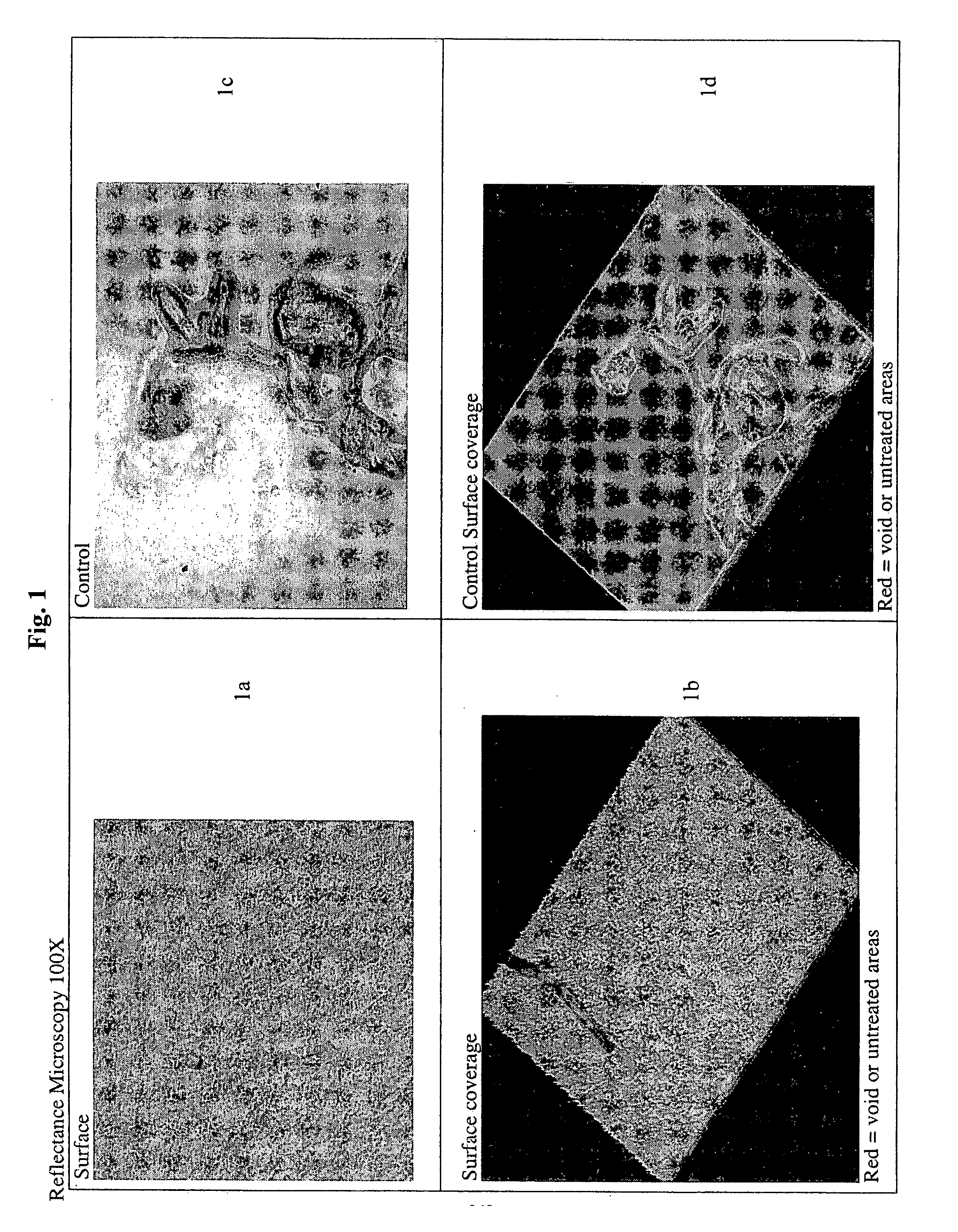Method of inhibiting the transmission of viruses
a virus and anti-virus technology, applied in the field of anti-virus compositions, can solve the problems of reducing the population of microorganisms, including pathogens, significantly reducing the population of bacteria, and high virus infection rates among all mammals, and achieves effective and persistent viral control
- Summary
- Abstract
- Description
- Claims
- Application Information
AI Technical Summary
Benefits of technology
Problems solved by technology
Method used
Image
Examples
example 1
[0179] The following compositions were prepared.
SampleComposition (by wt %)A62% ethanol in waterB30% ethanol in waterC2% salicylic acid in 62% ethanol / waterD2% salicylic acid in 30% ethanol / waterE2% salicylic acid in dipropylene glycol / water
[0180] The samples were tested for antiviral activity against Rhinovirus 1A and Rotavirus Wa in a time kill suspension test. The following table summarizes the results of the test.
Log 10 Reduction of VirusRhinovirus 1ARotavirus WaSample30 sec1 min30 sec1 minABCComplete eliminationComplete eliminationDComplete eliminationComplete eliminationEIncomplete inactivationIncomplete inactivation
[0181] This example illustrates the synergistic antiviral effect provided by the combination of a disinfecting alcohol and an organic acid having a log P of less than one. Samples A and B show that a disinfecting alcohol alone does not provide an acceptable control of viruses. Sample E shows that salicylic acid dissolved in dipropylene glycol and water does not...
example 2
[0182] The following antiviral composition, which is capable of reducing skin pH, was prepared and applied to the fingerpads of human volunteers:
Sample 2MaterialPercent (by weight)Ethanol70.0Deionized water19.8ULTREZ ® 201)1.0Isopropyl Palmitate1.0Mineral oil1.0DC 200 silicone fluid1.0Cetyl alcohol1.0Citric acid2.0Malic acid2.0GERMABEN II2)1.0Triethanolamine0.05100.0
1)Acrylate / C10-30 Alkyl Acrylate Crosspolymer;
2)Preservative containing propylene glycol, diazolidinyl urea, methylparaben, and propylparaben.
The pH of Sample 2 was 3.1.
[0183] In the test, Sample 2 was applied to the fingerpads of all fingers, except the thumbs, of eight volunteers. The thumbs were control sites. The volunteers were divided into fours groups of two each. Each group I-IV then was challenged at a predetermined time with rhinovirus titer on all the fingerpads of each hand to determine the time-dependent efficacy of the test composition. At the time appropriate for each group, the skin pH of the finger...
example 3
[0185] The clean fingerpads of test subjects were treated with the following compositions. Baseline skin pH readings were measured from the fingerpads prior to treatment with the compositions. Skin pH measurements also were taken immediately after the composition dried on the fingerpads, then again after four hours.
%AverageAverageViralHandsSkin pHSkin pHLog 10withSampleComposition (by wt %)(T = 0)(T = 4 hr)ReductionVirusA2% citric acid, 2% malic2.813.23>3log100acid, 62% ETOH, 1.25%hydroxyethylcelluloseB2% citric acid,2.643.03>3log1002% tartaric acid,62% ETOH, 1.25%hydroxyethylcelluloseC2% malic acid, 2% tartaric2.662.94>3log100acid, 62% ETOH, 1.25%hydroxyethylcelluloseD62% ETOH, 1.25%5.535.13log1-100hydroxyethylcelluloseE2% citric acid, 2% malic2.903.72>3log100acid, 70% ETOH, 1%polyacrylic acidF70% ETOH, 1% polyacrylic4.805.162.0log10100acidG70% ETOH, 1.25%5.35.25log10100hydroxyethylcellulose
1)ETOH is ethanol
[0186] Four hours after treatment of the fingerpads with Samples A-G, Rh...
PUM
| Property | Measurement | Unit |
|---|---|---|
| pH | aaaaa | aaaaa |
| temperature | aaaaa | aaaaa |
| glass transition temperature | aaaaa | aaaaa |
Abstract
Description
Claims
Application Information
 Login to View More
Login to View More - R&D
- Intellectual Property
- Life Sciences
- Materials
- Tech Scout
- Unparalleled Data Quality
- Higher Quality Content
- 60% Fewer Hallucinations
Browse by: Latest US Patents, China's latest patents, Technical Efficacy Thesaurus, Application Domain, Technology Topic, Popular Technical Reports.
© 2025 PatSnap. All rights reserved.Legal|Privacy policy|Modern Slavery Act Transparency Statement|Sitemap|About US| Contact US: help@patsnap.com


